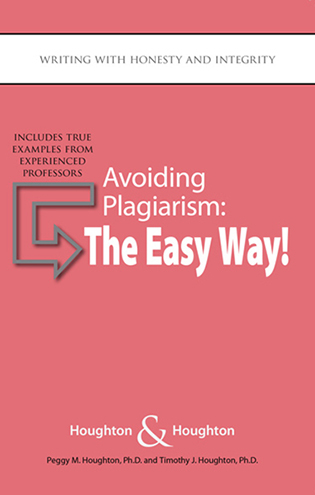
Availability: In Stock/Ready to Ship.
Suggested retail price shown above.
For discounted Bookstore or School District bulk orders: Contact Us
Plagiarism is a form of academic dishonesty. It has become a major concern in academia due to the ever-growing popularity of the Internet. Plagiarism can result in more than just a failing grade. Students can lose credit for a course, be forced to repeat a course, be placed on academic probation, or get expelled from school.
This book is designed to help students avoid plagiarism by explaining the basics as simply as possible. It contains real examples of students who failed courses for violations of academic honesty. Also included are examples of properly citing authors of books and journals in the reference section of composed papers. These examples conform to APA and MLA writing styles, which are used worldwide for academic and non-academic writing. We understand what it takes to write quality papers using proper citation of deserving authors, and so will you after reading this book.
Education is one of the best investments you will ever make...and our books maximize that investment! (Houghton & Houghton)
In addition to providing an overview summary of plagarism and do's and don'ts, this book answers questions such as: